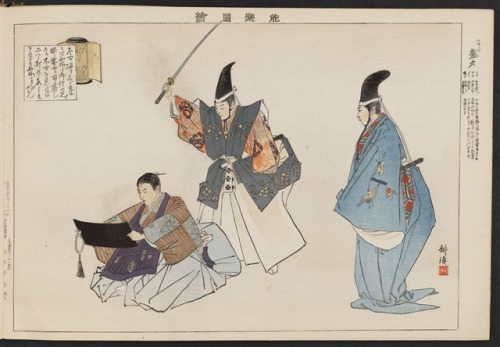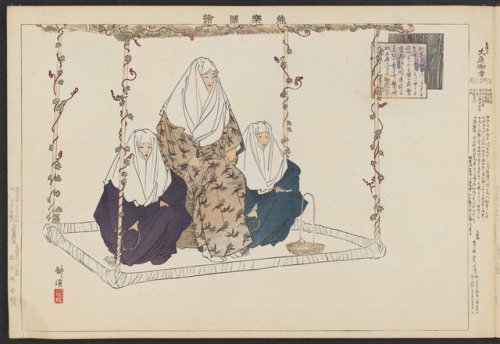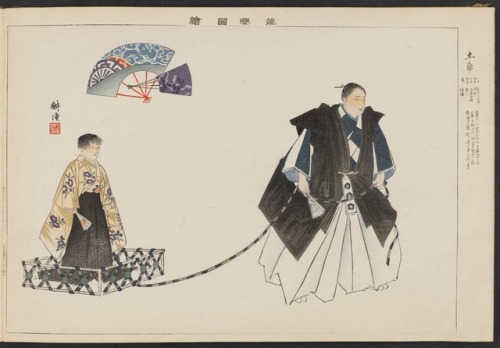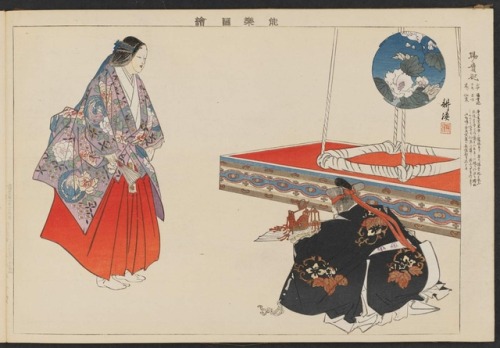Prints from the series “Pictures of Nô Plays,” Part II, Section I (Nôgaku zue, kôhen, jô)by Tsukioka
Prints from the series “Pictures of Nô Plays,” Part II, Section I (Nôgaku zue, kôhen, jô) by Tsukioka Kogyo, 1898-1899 (Click to enlarge)Miidera, Jan. 1899Morihisa, July 1899Ôhara gokô, Jan. 1899Tsuchiguruma, Feb. 1899Yôkihi, Oct. 1898Noh (能 Nō), derived from the Sino-Japanese word for “skill” or “talent”, is a major form of classical Japanese musical drama that has been performed since the 14th century. Developed by Kan'ami and his son Zeami, it is the oldest major theatre art that is still regularly performed today. Noh is often based on tales from traditional literature with a supernatural being transformed into human form as a hero narrating a story. Noh integrates masks, costumes and various props in a dance-based performance, requiring highly trained actors and musicians. Emotions are primarily conveyed by stylized conventional gestures while the iconic masks represent the roles such as ghosts, women, children, and the elderly. Having a strong emphasis on tradition rather than innovation, Noh is extremely codified and regulated by the iemoto system. -- source link
Tumblr Blog : sartorialadventure.tumblr.com
#fashion#japan#japanese art#japanese fashion#meiji era#costumes




